- Home
- Winston Groom
The Allies Page 20
The Allies Read online
Page 20
Yet there was also tremendous waste associated with these projects. The Russians had little or no experience constructing modern factories and infrastructure and were highly distrustful of any outsiders who did. Nor had Russian workers yet adapted to operating modern machinery, so there was a great deal of costly trial and error. The logic of Soviet communism imposed catch-22 conflicts. If workers reported that a project was not going well or efficiently, they were subject to being branded troublemakers or counterrevolutionaries. On the other hand, if they did not report such difficulties, they could be accused of treason! It was maddening.
Stalin personally justified his ruthlessness this way: “We are fifty or a hundred years behind the advanced countries. We must make good this distance in ten years. Either that, or they will crush us.”14
* * *
MANY TEACHERS, SCIENTISTS, authors, artists, and other “intellectuals” had been murdered during the terrors of the 1920s and ’30s or banished to forced labor camps. But education in the Soviet Union was given primacy in Stalin’s Russia. At the time of the 1917 October Revolution, fewer than 30 percent of the population was literate. By the mid-1930s, on Stalin’s orders, that figure was improved to almost 90 percent. But the nature of education had vastly changed. In fact, it was somewhere between training and indoctrination. Stalin’s opinion on the subject boiled down to this: “Education is a dangerous weapon, whose effects depend on who holds it in his hands, and at whom it is aimed.”15
Math and science were stressed above all else in Stalin’s Russia, as engineers would be highly necessary for the industrialization program. Also, doctors would be needed, so medicine was stressed. Reading was taught to the extent that it complemented the latter. Subjects such as history, literature, philosophy, and the social sciences were treated as suspect and mostly closed out. In their place, a new curriculum was introduced, watched closely by the secret police. The overarching themes of these new subjects were dressed in Communist ideology and infected with so many falsified facts and statistics as to be ludicrous to modern Western scholars.
The goal of Stalin’s education establishment was to turn out as many right-minded communists as possible, who would serve the state with unquestioning loyalty. Those who fell by the wayside through lack of intelligence, behavioral problems, or mental issues were sent to the labor camps. Teachers lived in constant fear of being exiled or worse. The entire enterprise was conducted with a quivering, wearying tension.16
This did not apply, however, to Stalin’s children, of whom there were now three: two boys and a girl. They were tutored privately. Most Russians did not even know that Stalin had children, let alone a wife. Yet in 1921 Stalin’s second wife, Nadya, had given birth to their son Vasily, who was joined in the Stalin’s Kremlin household by Yakov, Stalin’s fourteen-year-old son by his first wife, Kato, who had died when the boy was only nine months old.
At first Stalin seemed to warm to the boys, taking them in the summers to his dacha, a lavish vacation home outside the city near the Moskva River (which the Communists had expropriated from a rich bourgeois industrialist). It was a pastoral spot in Chekhovian country that was once home to the old imperial gentry. There, Stalin was frequently joined by his old friend and political ally the Pravda editor Nikolai Bukharin, who often arrived with his tame gray fox on a leash and his artist’s box of canvases and paintbrushes. They drank and sang late into the night.
But as the boys grew older Stalin was generally harsh and distant, demanding of them stern rigors because they were his sons and were expected to set a disciplined example for the country. Neither boy was capable of it, and both came to bad ends as we shall see.
Then, in 1926, Nadya presented Stalin with a daughter, whom they named Svetlana. She became the apple of her father’s eye. He took her everywhere with him and carried her in his arms or on his shoulders, even when she was a teenager. Photographs show her with many of the most famous Communists of the day—and some of the most dangerous—in garden settings where Stalin often held informal meetings. Svetlana came to a better end than her brothers, but she had to renounce and repudiate her upbringing to do it.
Nadya’s suicide has been the subject of much speculation. What is known is that schizophrenia ran in her family, and she had terrifying mood swings. She wanted to be in the party and contribute to the cause but Stalin—who was raised in the old way, in which women were subservient, silent, and obedient—was opposed. Nadya covertly enrolled in a college to learn, for some reason, fiber chemistry. There, other students talked in hushed tones of the current state terror, of executions and mass murders and people being herded into forced labor camps. When she told Stalin of this he dismissed it, and a rancor ensued. They argued more as time passed. After one particularly unpleasant quarrel in November 1932, Nadya left a dinner party and returned to the apartment in the Kremlin, where she shot herself fatally in the head with a British Walther revolver.
Her death affected Stalin intensely, and he brooded in between fits of rage. He sought reasons where there was little evidence. She had been reading a book that might have set her mind off; he blamed three of her friends for somehow being involved in the suicide. (And, indeed, sixteen years later he had them all arrested and imprisoned for “knowing too much about the death of Stalin’s wife.”)17
From then on, various tutors, companions, and security personnel provided by the state supervised the children. One can surmise that their upbringing was not the easiest or the most fulfilling.
Nadya suspected Stalin of having dalliances with other women—particularly in his office, a hundred yards across Red Square, from which he often did not get home until late at night. It was rumored that Stalin had affairs with various women, from simple peasant workers to former aristocrats, and that in some cases he even married them, which would make him a bigamist. One engaging report came from the noted British travel writer Rosita Forbes, who recounted in her memoirs of interviewing one of “Stalin’s wives,” whom she described as a plain factory worker in a cramped, dilapidated cottage in Moscow. “She was pale with hair falling around her neck” amid a “perpetual smell of cabbage soup,” a “glaring electric bulb hanging by dusty wires,” and a “pathetic electric saucepan in which scraps of meals were cooked on the living room table.”18
Many of these accounts are interesting, but there’s no solid proof of any of it. Communists were not required to obtain marriage licenses, so there are few records on file for proof. There was other gossip, but little hard evidence, because Stalin wrote his own biography—and indeed the entire history of the Soviet Union—the way he wanted it to be told, under penalty of death. Others might have had suspicions or even proof but revealed it at their peril. In the end, it’s not hard to surmise that Stalin, with all his fearsome power, could have had his way with just about any Russian woman he wanted who valued her life. And he probably did.
* * *
WELL INTO THE 1930S STALIN continued to solidify his power until he became unquestionably the ultimate dictator of the Soviet Union. The final triumph over his perceived enemies was embodied in the infamous Moscow Show Trials. In these, thousands of high-ranking Communist intellectuals, and much of the higher officer corps of the Soviet army, were arrested and tortured by the NKVD (which had replaced the OGPU) until they confessed to “crimes against the state.” These included such charges as treason, sabotage, conspiracy, terrorism, attempting to overthrow the Soviet state, and plotting to assassinate Stalin. For these crimes, they were publicly tried and sentenced to death or lengthy prison sentences. Stalin’s pretext for the show trials was the murder in 1934 of the Leningrad Communist boss Sergey Kirov. Moreover, millions of ordinary Soviet citizens were either killed or imprisoned as Stalin’s lust for power and vengeance swept the land.
The trials began in the early 1930s in the shadow of the colossal failures of the first five-year plans. Stalin’s paranoia had convinced him that a whole array of peop
le, including many old friends from Bolshevik days, were scheming against him with a mind to bring down not only him but the Soviet state as well. Stalin intended to strike the first blow. A new criminal code had been authorized in the late 1920s with just this in mind, including all manner of provisions for trying and penalizing cases of treason.
In the first trial, more than fifty coal mining engineers were hauled before a tribunal for everything from “sabotage” to “supporting capitalism” to “opposing the state.” Prosecution was led by Andrey Vyshinsky, a longtime Communist Party apparatchik who later became the Soviet minister of foreign affairs (equivalent to the U.S. secretary of state). His watchword became “Give me a man and I will find the crime.” The accused were subjected to brutal tortures and threats against their families until twenty pleaded guilty. Others who had confessed recanted their confessions; still others refused to confess at all.
Held in the Kremlin’s enormous Hall of Columns, or the House of Unions, the trials were witnessed by tens of thousands of Communist Party members (daily attendance was obligatory on a rotating basis). Almost a hundred “carefully chosen” foreign journalists covered the proceedings. Aside from the rigged confessions, testimony included accusations by subordinates of deliberate slowdowns or machinery malfunctions; fake letters and documents were also produced. The verdict was a foregone conclusion. All were found guilty. Eleven were sentenced to death and thirty-eight were sent to prison for up to ten years. Mining engineers were at a premium in Soviet Russia at the time, however, so many of the prison sentences were commuted or greatly reduced.
The purpose of the trial was to put a terrifying fright into everyone involved in the vast industrialization and modernization of the Soviet Union. Based on this standard it was a success.
Other show trials followed. These were merely the prelude for Stalin’s Great Purge of 1936–38, which focused on the old Bolshevik Party that had clustered around Lenin and Stalin after the revolution of October 1917 (including Stalin’s longtime friend Nikolai Bukharin, who was shot by firing squad and his wife put in a forced labor camp). The principal charge was that they conspired with Trotsky, or Hitler, or right-wing conspirators, or at least somebody, to overthrow or betray the Soviet Union. All were tortured and “confessed.”
Two old Bolsheviks, Grigory Zinoviev and Lev Kamenev, had also been longtime friends of Stalin who, he perceived, had gone astray. They agreed to confess, provided they received a personal assurance from the entire Politburo that their lives and the lives of their families would be spared. When time came for the personal assurances, who should be their guarantor but Stalin himself, who agreed to their conditions, telling the men, “That goes without saying.” Then he had them shot anyway—along with most of their families.19
Bukharin, Stalin’s old drinking and singing companion who had been with him from the outset, wrote an almost daily series of letters to the boss, some of them nearly incoherent with apprehension and grief. He confessed his sins, claimed to have understood the reason for these mass murder purges—and actually agreed with it. Stalin’s answer was Sphinx-like. At first nothing. He let him sweat it out over the months until his turn came. In the last days Bukharin asked to be given a fatal dose of morphine in his cell instead of a bullet to the brain. But even this was denied him. He asked to see his wife for a final time. No dice—she had already gone to the labor camps.
Another of those executed was an old Bolshevik named E. S. Goltsman, who was convicted in part on evidence that he had conspired with Trotsky during a speech by the latter at Copenhagen’s Hotel Bristol in 1932. A week after Goltsman’s execution, a Danish newspaper revealed that the hotel had been demolished in 1917. One is left with the impression that this inconvenient fact, had it been introduced at the trial, wouldn’t have mattered a bit.
The trials continued week after week, until nearly all the old Bolsheviks who had formed the party during and after the October Revolution had been liquidated. In fact, of the nearly two thousand delegates to the 1934 party congress, half were arrested and many sent to the firing squad. The military fared no better. Three out of five field marshals were arrested, tried, and executed, as well as thousands of lesser grade officers.
Toward the end, there were so many defendants that the courts could not handle them. Stalin then set up a series of “tribunals” all over Russia: a trio of party men with nearly limitless indictments were restricted by Stalin’s edict that a trial should last no more than ten or fifteen minutes. Tens of thousands were condemned and liquidated through these proceedings, before at last the members of the tribunals were themselves liquidated, as was the head of the secret police, his successor, and, eventually, his successor as well. Stalin even liquidated his own longtime bodyguard. Some people thought, privately, that Stalin intended to kill everyone in Russia.
Almost all arrests were made after midnight. The NKVD would ride in dark cars to the address of the suspect (all addresses in Russia were known to the police). He, or occasionally she, would be arrested before their terrified family and taken away, never to return. Residential buildings in Moscow and other large cities generally featured a single room to live in with a communal bathroom on each floor, where other families could hear the loud knock of the NKVD and the order to “open up.”
The next morning, according to the historian Edvard Radzinsky, everyone’s eyes would be averted from the unfortunate family while they used the communal bathroom. After a few days they would be moved out, and a short while later a new family would arrive.
After the trials were over Trotsky at long last was singled out for special attention. He had been living with his wife in Mexico City, where he had escaped several botched assassination attempts, until one of Stalin’s agents drove an ice ax into his head in 1940.
Stalin’s show trials made for some good literature ranging from Arthur Koestler’s powerful novel Darkness at Noon to George Orwell’s satirical Animal Farm—but these were Western publications. The arts under Stalin were brutally suppressed, and creative expression was channeled entirely through the state, overseen by commissars, or party operatives, who saw to it that art, literature, and music were strictly directed at the masses to glorify the revolution and its aims. The Western left—British, American, French, etc.—generally approved of the Soviet depredations as necessary evils to achieve the promise of the Socialist dream. But they were mostly unaware of the extent of the killing.
Much of the information disseminated to the American people about Soviet Russia in that era came from Walter Duranty, the New York Times’ bureau chief in Moscow. Duranty, a one-legged, womanizing, drug-using, Eton/Harrow-educated Englishman, ignored—apparently deliberately—a majority of the ritual killings and other sufferings during the early Communist terrors and famines. He described the Soviet Union from the early 1920s to the show trial period in the 1930s in mostly glowing terms. Obtaining interviews with Stalin, Duranty painted a rosy picture of the Soviet leader in thirteen stories in the Times that ran in 1931. He compared him as “benevolent” in the fashion of Ivan the Terrible, and contended Stalin was bent on helping the millions of Russian peasants out of poverty. The profiles did not turn Stalin into a world figure of the stature of a Churchill or Roosevelt—but they took the edge off of a shadowy character many people saw as an ogre and a monster. There is evidence that Soviet agents provided Duranty with women and luxuries that were rare in the Soviet Union in the 1920s and ’30s. Duranty’s stock response when another reporter or visitor brought up the wholesale murder associated with the Communist regime was “You can’t make an omelet without breaking eggs.”20
In 1932, Duranty won a Pulitzer Prize, which was said to be a critical factor in President Franklin Roosevelt’s decision to recognize the U.S.S.R. diplomatically, which happened the following year.*6 A few well-established newsmen at the time spoke out against Duranty, but it wasn’t until the 1960s that the breadth of his misrepresentations became known. In 1990, in
response to a book by S. J. Taylor that exposed Duranty’s misreporting, the Times itself repudiated him in a piece charging that his articles were “some of the worst reporting to appear in this newspaper.”
The elimination through the show trials of so many high-ranking Communists tightened Stalin’s iron grip on the country almost to the breaking point—but did give some relief to his ever gnawing paranoia. It also gave some new meaning to the king’s soliloquy in Shakespeare’s Henry IV: “Uneasy is the head that wears a crown.”
* * *
LIFE IN SOVIET RUSSIA in the 1930s was not always bad, other than the vague sense of dread that the state might someday come calling. According to historian Radzinsky, who lived through it, most people went about their business feeling that they were part of a brave new world. In the cities, each street corner contained loudspeakers on a light pole that blared out propaganda and occasional instructions from dawn to dusk. Stalin had decreed that great parks be built around Moscow and elsewhere, where sports—most especially soccer—could be played. The Russians were crazy about soccer, which, like other Europeans, they referred to as “football.” Matches drew huge crowds and rivalries were fierce. Sometimes too fierce: if the local club lost, “it became a matter of life and death.”
Enormous billboards were everywhere in the cities. On streets, in parks and stadiums, heroic pictures of Stalin and Lenin were accompanied by slogans or advice. “[Stalin] had created a country of collectives. Everything was collective. You worked collectively, lived collectively in a communal apartment, enjoyed your leisure collectively, perhaps on a collective excursion into the countryside. Holidays were collective—Miners’ Day, Construction Workers’ Day, Metalworkers’ Day. Every profession had its own holiday, so that on that one day its collectives could drink and frolic to their hearts’ content and—most important—all together.”21

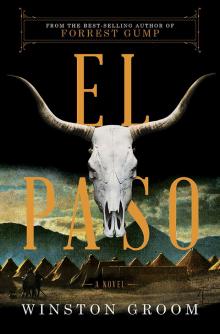 El Paso
El Paso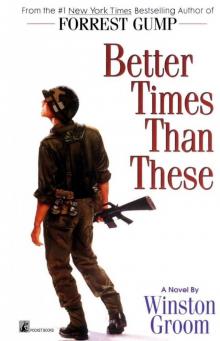 Better Times Than These
Better Times Than These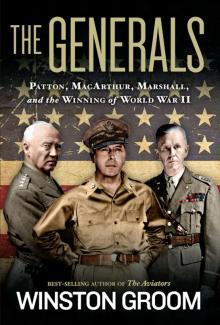 The Generals
The Generals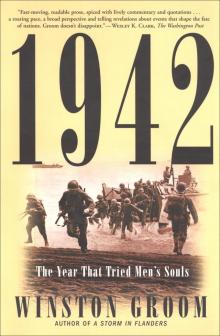 1942: The Year That Tried Men's Souls
1942: The Year That Tried Men's Souls Forrest Gump
Forrest Gump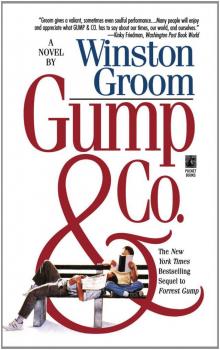 Gump and Co.
Gump and Co.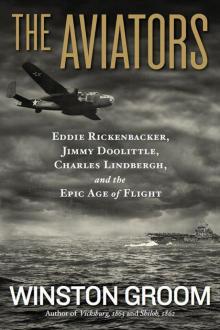 The Aviators
The Aviators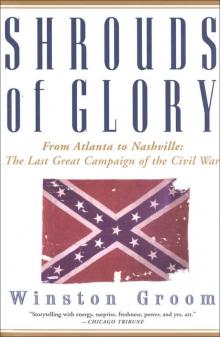 Shrouds of Glory
Shrouds of Glory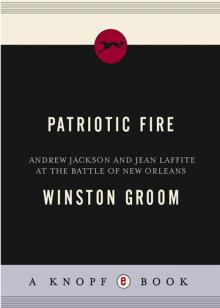 Patriotic Fire
Patriotic Fire Kearny's March
Kearny's March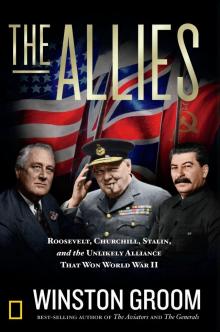 The Allies
The Allies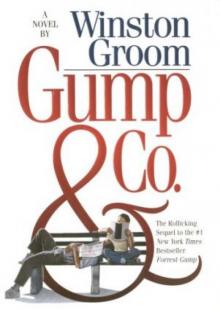 Gump & Company fg-2
Gump & Company fg-2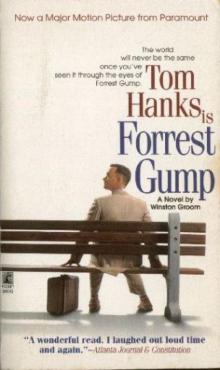 Forrest Gump fg-1
Forrest Gump fg-1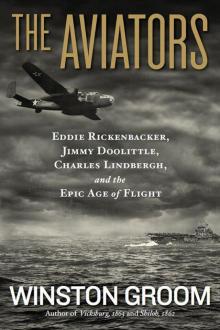 The Aviators: Eddie Rickenbacker, Jimmy Doolittle, Charles Lindbergh, and the Epic Age of Flight
The Aviators: Eddie Rickenbacker, Jimmy Doolittle, Charles Lindbergh, and the Epic Age of Flight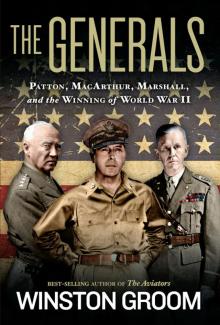 The Generals: Patton, MacArthur, Marshall, and the Winning of World War II
The Generals: Patton, MacArthur, Marshall, and the Winning of World War II